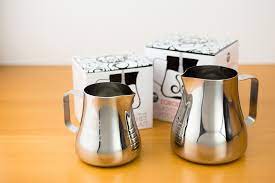If you have a glass rinser, you know it can sometimes be challenging to use it effectively with cold water. How often do you end up with a wet sink after rinsing your glasses? In this article, we’ll explore the advantages and disadvantages of using hot versus cold water for rinsing glassware, helping you decide which option may work best for your needs!
What is a Glass Rinser?
A glass rinser is a convenient kitchen gadget designed to quickly rinse glassware using either hot or cold water. These devices are favored for their efficiency and ease of use, especially in busy kitchens and bars. While glass rinsers help speed up the cleaning process, it is important to understand their proper use and limitations to avoid potential safety issues and ensure thorough cleaning. For more in-depth information on glass rinsers, check out glass washer sink.
Why Would a Glass Rinser Use Hot or Cold Water?
Many individuals assume that hot water is the optimal choice for rinsing dishes because it effectively loosens dried or stuck-on food particles, making them easier to remove. Conversely, cold water is often preferred for rinsing fresh fruits and vegetables as it helps preserve their texture and nutritional value. Using hot water with glass rinsers can help remove grease and residue more efficiently but may sometimes cause streaks or spots when the glass dries. Cold water offers a gentler rinse that reduces spotting and is energy-efficient. Choosing between hot and cold water largely depends on the type of glassware and the nature of the residue.
For additional insights on this topic, explore glass washer sink and Empty Room In Your House.
Rinsers Come in Different Shapes and Sizes
Glass rinsers are available in a variety of shapes and sizes, catering to different types of glassware and kitchen setups. The choice between hot and cold water rinsing often depends on the specific applicator and design of the rinser. Hot water tends to be more effective at breaking down stubborn build-up such as soap scum and mineral deposits, enhancing the clarity and cleanliness of glassware. Cold water, on the other hand, may provide quicker rinsing for glasses stored in cooler environments and is less likely to cause residual spots. Selecting the right rinser and water temperature will improve your rinsing results.
Different Materials That Make Up a Glass Rinser
Glass rinsers are commonly constructed from materials such as stainless steel, durable plastics, or a combination of both. Stainless steel rinsers are typically favored for their durability and resistance to heat, making hot water rinsing safe and effective. Plastic rinsers are lightweight and more affordable but may be less heat-resistant. The choice of material influences how the rinser should be cleaned and maintained—for instance, metal rinsers benefit from hot water cleaning to prevent residue buildup, while plastic rinsers are better suited to cold or warm water washes to avoid warping or damage.
A Glass Rinser is Typically Made of Metal
Most high-quality glass rinsers are made of metal, specifically stainless steel, due to its strength and resistance to corrosion. Metal rinsers are designed to withstand hot water cleaning, which helps sanitize and remove stubborn residues. However, if your glass rinser features plastic or ceramic components, it’s advisable to use cooler water to prevent damage. Also, while dishwashers might seem convenient, hand washing rinsers with hot water and mild detergent every 7 to 10 days ensures optimal hygiene and prolongs their lifespan. Always inspect your rinser for cracks or wear regularly and replace it if any damage is detected to maintain safe usage.
Conclusion
There is no definitive answer when it comes to using hot or cold water for rinsing glassware with a glass rinser—it ultimately depends on personal preference and specific circumstances. Hot water is excellent for breaking down tough residues and grease, while cold water can reduce spotting and preserve delicate glass finishes. Experiment with both to determine which method works best for you. As a rule of thumb, use hot water for metal rinsers and cold or warm water for plastic or ceramic models to maintain their longevity and ensure safe usage.
If you’re interested in learning more about glass rinsers and their optimal use, be sure to visit our Home Appliances category for additional resources and expert advice.
Additional Insights: When using a glass rinser, it’s also important to consider water quality. Hard water, which contains high mineral content, can cause spotting and buildup on glassware regardless of water temperature. Installing a water softener or using filtered water with your rinser can significantly improve cleaning results. Additionally, pairing rinsing with a proper drying technique—such as air drying or using a lint-free cloth—can help avoid residual water marks and maintain your glassware’s pristine appearance.

























